Are you ready to build your future?
Looking for an inspiring work environment and challenging job? Read more about our vacancies, the colleagues you’d be joining and the application process using the button below. Join 4PS today!


The construction industry is about far more than laying bricks. Firms juggle schedules, costs, labour, materials, payroll, and client comms – it’s a logistical minefield.
The construction industry is about far more than laying bricks. Firms juggle schedules, costs, labour, materials, payroll, and client comms – it’s a logistical minefield.
Bringing these tasks together on a single platform – like an ERP (Enterprise Resource Planning) system is a smart way to reduce the workload. But it’s not just about simplifying complexity. Construction ERP software pulls in real-time data, stores your information securely, and syncs it across documents to give you the clearest, most accurate view of your business.
The problem?
Too many firms still rely on outdated, legacy ERP systems – holding them back from unlocking the full power of modern construction software.
In this guide:
What’s the issue with legacy construction ERP software? If it’s working and everything’s getting done, why bother changing? Most firms wouldn’t apply the same logic to construction practices, where efficiency and quality are paramount. The same is true of legacy ERP systems.
Consider these limitations:
The impact of legacy construction ERP systems isn’t limited to a single error or minor inefficiency – it ripples through the entire project. Delays, miscommunications, and outdated data can quickly cascade into larger problems further down the line.
A missed delivery or scheduling error caused by poor coordination or data silos can throw off the whole project timeline. For example, if a supplier delay pushes back installation, the glazier scheduled for that week may need to be rebooked—possibly a month later. Now, the entire project timeline shifts.
It’s no surprise that, as of 2022, 9 in 10 large construction projects were behind schedule. While some pointed to COVID-19, delays were already widespread – 85% of projects ran late back in 2016.
Delays aren’t the only consequence. They often lead to budget overruns – especially when combined with poor forecasting and inadequate cost tracking. If labour or material prices spike and your systems don’t account for it, the financial blow can be significant. Many firms end up absorbing the rising costs themselves, eroding profit margins.
What ties all these issues together? Poor communication. In most root cause analyses, the same problem emerges: crucial information was relayed to one person but didn’t make it across the team. A simple oversight turns into an expensive mistake.
The obvious question is, how do you know when you’ve outgrown your construction ERP software? After all, you can’t invest in an entirely new platform every year.
Look for these critical signs:
So, what does a modern ERP system actually offer?
A lot more than just a cleaner interface. Modern platforms like 4PS Construct—ERP software for construction companies—are purpose-built to support today’s fast-paced, multi-site, and highly collaborative projects.
Here’s what you can expect:
Inefficiencies matter. If you’re not maximising your firm’s potential, others will – and you’ll fall behind. The digital transformation is an incredible opportunity for forward-thinking construction companies to integrate cloud-based construction software into their process. It’ll supercharge your communications, planning, and day-to-day management.
4PS Construct offers end-to-end construction ERP software for all parts of the industry. We’ve supported hundreds of customers and won numerous awards thanks to our efforts.
Want to see 4PS Construct in action? Request a free demo to get a hands-on look at our system and how it can transform your company.
Looking for an inspiring work environment and challenging job? Read more about our vacancies, the colleagues you’d be joining and the application process using the button below. Join 4PS today!
Please fill in your name and E-mail to download this file.